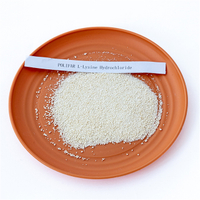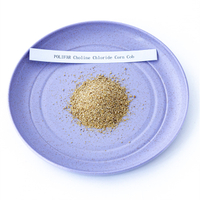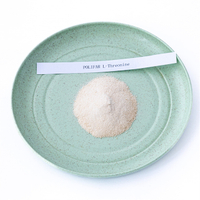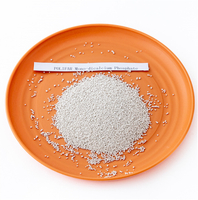Views: 0 Author: Site Editor Publish Time: 2024-06-13 Origin: Site








Folic Acid for Feed Grade, also known as vitamin B9, is a water-soluble vitamin specifically used as a folic acid additive in animal feed. It has high purity and stability to ensure that it can maintain its effectiveness during feed production and storage. Folic acid plays a key role in cell generation, DNA synthesis and repair, and is essential for animal growth, reproduction and health.
The discovery and application of feed-grade folic acid can be traced back to the 1940s. At that time, when scientists were studying methods to treat anemia, they found that a substance extracted from spinach leaves could effectively relieve the symptoms of anemia. This substance was later named folic acid. With further research on the function of folic acid, scientists realized its important role in cell division, DNA synthesis and repair. Therefore, folic acid was gradually applied to the field of animal nutrition, and feed-grade folic acid specifically for animal feed was developed to improve the health and production performance of animals.
Feed-grade folic acid promotes the synthesis and repair of DNA and RNA in the body mainly by participating in the one-carbon unit transfer reaction. It is an important coenzyme in the synthesis of purine and pyrimidine, and plays a key role in cell division and growth. In addition, folic acid is also involved in amino acid metabolism, supporting protein synthesis and erythropoiesis. Through these mechanisms of action, folic acid plays an important role in maintaining the normal physiological functions of animals and promoting growth and development.
There are significant differences between feed-grade folic acid and food-grade and pharmaceutical-grade folic acid in terms of use, purity and stability:
Use:
Feed Grade Folic Acid: Specially used in animal feed to improve animal health and performance.
Food Grade Folic Acid: Used in human food and dietary supplements to help prevent and treat folate deficiency.
Pharmaceutical-grade folic acid: used in the manufacture of pharmaceuticals to treat specific health problems, such as anemia and certain birth defects.
Purity:
Feed grade folic acid: The purity is relatively high, generally above 95%, ensuring its effectiveness in feed.
Food-grade folic acid: higher purity requirements to ensure safety and effectiveness.
Pharmaceutical grade folic acid: the highest purity and meets strict pharmaceutical production standards.
Stability:
Feed grade folic acid: After special treatment, it has high stability and can maintain its activity during feed production and storage.
Food-grade folic acid and pharmaceutical-grade folic acid: also require high stability, but may have different technical requirements in terms of handling and storage conditions.
Processing technology:
Feed grade folic acid: adopts specific processing technology to adapt to various environmental conditions during feed production.
Food grade and pharmaceutical grade folic acid: The production process is more stringent to ensure that it meets food and drug safety standards.
Generally speaking, feed-grade folic acid is specifically designed to meet the needs of animal feed to ensure the best effect in the feed, while food-grade and pharmaceutical-grade folic acid pay more attention to human health needs and safety standards.
The use of feed-grade folic acid in animal feed has many advantages and can significantly promote animal health and production performance. Here are the main benefits of feed grade folic acid:
1. Enhance immunity
Feed grade folic acid helps enhance the immune system function of animals and helps them better resist diseases and infections. By promoting the production and function of white blood cells, folic acid can improve an animal's overall immunity, reduce the incidence of disease, and increase survival rates.
2. Promote reproductive capacity
Folic acid plays a key role in the reproduction process of animals. It helps improve the quality and quantity of germ cells, thereby increasing reproductive and litter rates. In addition, folic acid can also reduce the abortion rate and premature birth rate of pregnant animals and improve the health and survival rate of cubs.
3. Promote growth and development
Feed grade folic acid is particularly important for the growth and development of young animals. It supports bone and muscle development by promoting cell division and tissue growth, thereby increasing growth rates and weight gain in animals. At the same time, folic acid can also improve the feed conversion rate and increase the animal's utilization efficiency of feed.
4. Prevent nutritional anemia
Folic acid plays an important role in the production of red blood cells and can prevent and treat nutritional anemia caused by folic acid deficiency. By supplementing feed-grade folic acid, we can ensure the normal production of red blood cells in animals, prevent anemia symptoms, and maintain the health of animals.
5. Improve fur quality
Folic acid has a positive impact on the skin and coat health of furry animals. By promoting cell regeneration and protein synthesis, folic acid can improve the gloss and density of hair and improve the quality of fur, which is of great significance to the fur farming industry.
6. Improve production performance
Supplementation with feed-grade folic acid improves performance in a variety of poultry and livestock species. For example, after folic acid supplementation of egg-laying poultry, egg production rate and eggshell quality will be improved; after folic acid supplementation of dairy cows, milk production and milk quality will be improved. By improving animal health and production, folic acid can significantly increase breeding efficiency.
7. Anti-stress effect
Animals may experience stunted growth and reduced immunity under stress conditions such as transportation, vaccination, and environmental changes. Feed grade folic acid can help animals better cope with these stress factors, reduce stress reactions, and maintain normal growth and production.
8. Improve reproductive health
In breeding animals such as sows and cows, folic acid supplementation can help reduce early embryonic mortality and increase the survival rate of fertilized eggs, thereby improving reproductive health and efficiency.
9. Economic benefits
Although the initial cost of feed-grade folic acid is higher, it can bring higher economic returns in the long term due to its significant health and production benefits. By reducing disease occurrence and increasing reproductive rates and growth rates, feed-grade folic acid can significantly improve the overall efficiency of farms.
The importance of feed-grade folic acid in animal nutrition and health management cannot be ignored. By scientifically and rationally supplementing feed-grade folic acid, the health and production performance of animals can be significantly improved, thereby improving the economic benefits of farms.
Feed-grade folic acid, used primarily in animal nutrition, has several disadvantages that can impact both the animals and the broader environment. Here are some key points to consider:
1. Stability Issues:
Degradation: Folic acid is sensitive to environmental conditions such as light, heat, and humidity. During storage and processing, it can degrade, reducing its effectiveness.
Shelf Life: The stability issues can lead to a shorter shelf life for feed products containing folic acid, necessitating more frequent purchases and careful storage conditions.
2. Bioavailability:
Lower Absorption: Feed-grade folic acid may not be as bioavailable as other forms of folate, meaning animals may not absorb and utilize it as efficiently. This can necessitate higher doses to achieve desired nutritional outcomes.
Variation in Effectiveness: The bioavailability can vary between animal species and even among individual animals, making it challenging to ensure consistent nutritional benefits.
3. Cost Considerations:
Supplementation Costs: Due to the potential need for higher doses to account for degradation and bioavailability issues, the cost of supplementation can be higher.
Economic Impact: For large-scale operations, these additional costs can accumulate, impacting the overall economic efficiency of the animal husbandry practices.
4. Nutrient Interactions:
Antagonistic Effects: Folic acid can interact with other nutrients and compounds in the feed. For example, high levels of certain minerals can inhibit folic acid absorption, leading to potential nutrient imbalances.
Requirement Adjustments: The presence of other dietary components might require adjustments in the folic acid supplementation levels, complicating feed formulation.
5. Environmental Impact:
Runoff and Pollution: Excess folic acid not utilized by animals can be excreted and end up in the environment, contributing to nutrient runoff and potential water pollution.
Sustainability Concerns: The production and excessive use of synthetic supplements can raise concerns about the sustainability and environmental footprint of animal agriculture practices.
6. Health Implications for Animals:
Over-supplementation Risks: There is a risk of over-supplementation, which can lead to potential health issues in animals, such as imbalances in other nutrients or unintended physiological effects.
Dependence on Supplements: Relying heavily on synthetic supplements might overshadow the importance of a balanced, naturally nutrient-rich diet, potentially impacting overall animal health and welfare.
Considering these disadvantages, it's essential to carefully manage the use of feed-grade folic acid, optimizing dosage, and ensuring proper storage and handling to mitigate some of these challenges.
Folic acid is an essential vitamin (B9) in animal nutrition, playing several critical roles in the health and productivity of livestock. Here are the key points highlighting its importance in animal feed:
DNA Synthesis and Cell Division: Folic acid is crucial for DNA synthesis and cell division. Rapidly growing tissues, such as those in young animals and reproductive organs, require adequate folic acid to ensure proper growth and development.
Amino Acid Metabolism: It plays a vital role in the metabolism of amino acids, including the conversion of homocysteine to methionine. This process is essential for protein synthesis and overall growth.
Reproductive Health: Adequate folic acid levels support reproductive health in animals. It is important for fetal development in pregnant animals, reducing the risk of birth defects and supporting overall reproductive performance.
Red Blood Cell Formation: Folic acid is essential for the formation of red blood cells. Deficiency can lead to anemia, which negatively impacts the animal's health, growth, and productivity.
Immune System Support: By contributing to the synthesis of nucleotides and other essential molecules, folic acid helps maintain a robust immune system, enhancing the animal's ability to fight off infections and diseases.
Growth and Development: Young animals, in particular, require adequate folic acid for proper growth and development. It supports healthy bone growth, muscle development, and overall body condition.
Nervous System Function: Folic acid is involved in the synthesis of neurotransmitters, which are critical for normal nervous system function. Proper folic acid levels help maintain healthy brain and nerve function.
Feed Efficiency: Adequate folic acid levels can improve feed efficiency by supporting metabolic processes that optimize nutrient utilization. This leads to better growth rates and feed conversion ratios.
Prevention of Deficiency Symptoms: Preventing folic acid deficiency is crucial, as deficiency symptoms can include poor growth, anemia, reproductive issues, and compromised immune function.
Enhancing Production Parameters: In dairy cows, folic acid supplementation can improve milk production and quality. In poultry, it can enhance egg production and hatchability rates.
In summary, folic acid is vital for numerous physiological functions in animals. Ensuring adequate levels in animal feed contributes to overall health, productivity, and efficiency, making it an important component of animal nutrition programs.
The market demand for folic acid is robust and expanding across multiple sectors, including animal nutrition, human dietary supplements, fortified foods, and pharmaceuticals. In animal nutrition, the increasing need for high-quality animal products and improved livestock productivity is driving greater use of folic acid in feed, especially for poultry and swine. Human nutrition also sees rising demand, with folic acid commonly added to dietary supplements and fortified foods to prevent deficiencies. The pharmaceutical industry utilizes folic acid in medications for treating folate deficiency and related conditions.
Looking ahead, the prospects for folic acid are favorable due to several factors. Growth in animal husbandry, coupled with improved health and welfare standards, promotes its use in feed. Regulatory support for food fortification to combat nutritional deficiencies, particularly in developing regions, further boosts demand. Technological advancements are enhancing the stability, bioavailability, and delivery of folic acid, while increasing consumer awareness of its health benefits, especially for pregnant women, drives its inclusion in supplements and fortified foods. Additionally, rising disposable incomes in developing countries are increasing the consumption of fortified foods and dietary supplements. These trends indicate a continuing growth trajectory for the folic acid market, offering significant opportunities for suppliers and manufacturers.
Polifar, a supplier of feed additives, offers several advantages for their feed-grade folic acid:
1. High-Quality Product: Ensures effective nutritional supplementation.
2. Comprehensive Customer Support:
Technical Assistance: Expert help with feed formulations.
Consultation: Guidance on dosage, storage, and handling.
3. Reliable After-Sales Service:
Problem Resolution: Prompt assistance post-purchase.
Follow-Up: Regular check-ins to ensure satisfaction.
4. Supply Chain Efficiency:
Timely Delivery: Maintains consistent production schedules.
Inventory Management: Helps manage stock levels effectively.
Polifar's focus on quality, support, and service makes their feed-grade folic acid a reliable choice for animal nutrition.






